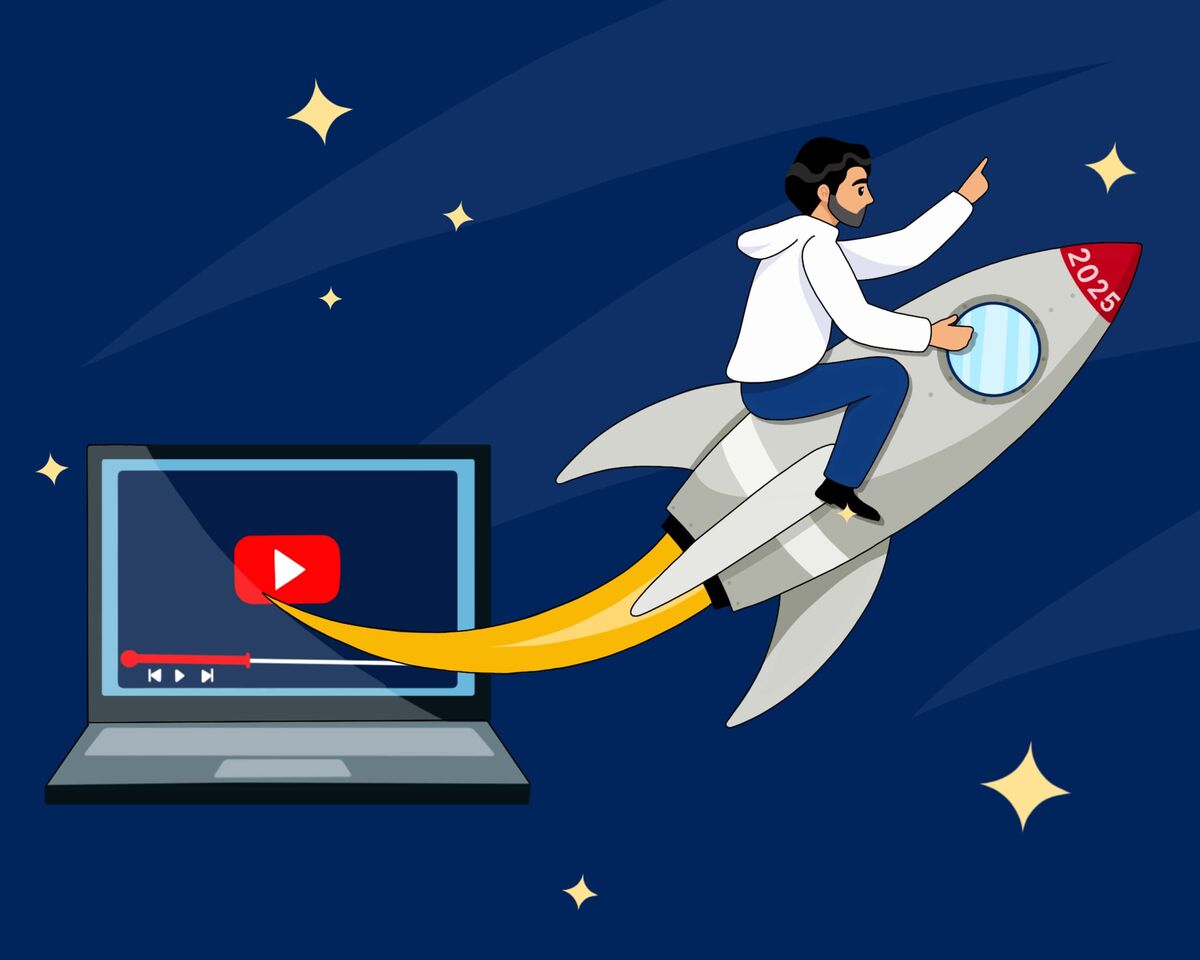How To Write an Engaging Script for a YouTube Video

Ever wondered why some videos rack up millions of views while others barely make a ripple? The secret isn’t just in the visuals—it’s in the script. A well-crafted script is the backbone of engaging content, and mastering this skill can set your channel apart from the crowd.
To gain a large number of views on your videos, you need to understand how to create engaging content.
If you're racking your brain trying to craft an extraordinary plot that will amaze everyone, stop right there—it's much simpler than you think.
You’ve likely seen those simple videos racking up millions of views and wondered, “What’s their secret, and why not me?”
In this guide, we’ll reveal some simple yet powerful steps to captivate your audience, boost engagement, and attract the viewers you’ve been dreaming of. Whether you’re a seasoned creator or just starting out, these tips will help you transform your YouTube scripts into scroll-stopping, binge-worthy content.
Once upon a time, there lived a pair of wise philosophers.
A long time ago, the ancient Roman grammarian Aelius Donatus revealed to us the secret of creating engaging content: every story must have a beginning, middle, and end.
The much more famous ancient Greek philosopher Aristotle also used this theory in his work "Poetics", where he discussed poetry and drama. And here’s the funny part — the three-act structure, as it’s more accurately called, still works and remains relevant today.
But there is a catch: while this structure remains effective, it’s often misunderstood and, at times, even criticized.
Not every creator follows the three-act structure when scripting their videos, and many have refined or completely reinvented it over the centuries. Still, there’s no denying its relevance, especially when faced with one of the most common issues in video creation: a lack of structure.
Why Structure Matters (But Doesn’t Guarantee Success)
Let’s be real. Simply applying the “beginning-middle-end” formula won’t transform a crochet tutorial or a how-to video into a cinematic masterpiece. However, it will give your content clarity and flow—qualities essential for keeping your audience engaged.
The three-act structure doesn’t promise creativity; it promises coherence. It ensures that your audience can follow your narrative, even if the content itself isn’t groundbreaking. Whether you're introducing a new concept, sharing a tutorial, or telling a story, this structure helps to keep your audience invested from start to finish.
In the end, Aristotle and Donatus were onto something. Structure doesn’t stifle creativity, it supports it. Use the three-act framework as your foundation, and build upon it to craft videos that not only inform but also captivate.
Avoid Random Rambling
Nobody wants to listen to aimless rambling. If you’ve ever thought that long podcasts with interviews of famous people are just streams of random thoughts, think again.
Behind the scenes, these seemingly casual conversations are anything but unstructured:
- Pre-planned frameworks guide the discussion, often agreed upon in advance with the guest.
- Experienced speakers instinctively build coherent narratives as they talk.
- High-quality editing ensures the final product feels seamless and engaging.
In most cases, these elements come together to create content that holds your attention and keeps you coming back for more. Without thoughtful planning or editing, content simply doesn’t get watched.
Start with the Three-Act Structure
Your first goal should be to focus on mastering the three-act structure. If you’re not already using this tried-and-true framework, it’s time to start.
This structure isn’t just a creative crutch—it’s a universal foundation that works across genres and niches. Here’s how to use it:
- The Beginning: Grab attention with a strong hook or compelling premise.
- The Middle: Develop your idea, share insights, or build suspense.
- The End: Wrap up with a clear takeaway, resolution, or call to action.
Once you’ve nailed this structure, you’ll be ready to dive into more advanced techniques that can elevate your content to the next level.
Leveling Up Your Craft
While the three-act structure is essential, it’s only the beginning. To truly stand out, you’ll need to explore:
- Dramaturgy: Understand the principles of storytelling to add depth to your content.
- Scriptwriting: Learn to weave compelling narratives tailored to your audience.
- Artistic Techniques: Experiment with visuals, pacing, and creative transitions to make your videos unforgettable.
By combining structure with these advanced tools, you’ll transform your videos into content that’s not just watched—but shared and celebrated.
So, take the leap. Start with structure, then build your way to storytelling mastery. Now, let’s dive into what really drives people to click "play."
Why do people watch THIS?
Since we're talking about YouTube, where most content is designed to provide either value or entertainment, let's keep things simple. Success on the platform isn’t about overcomplicating your work or overwhelming your audience. Success is about keeping it simple.
The art of making the complex simple is a key to overall success. The most popular videos are those that explain complex topics in an easy-to-understand way or quickly evoke emotions.
But what drives viewers to pick and stick with a video? At its core, the answer is curiosity.
Curiosity is the driving force behind every click.
What else, if not curiosity, inspired humans to explore the Earth, reach for the stars, and dream of other galaxies? This same innate desire to discover fuels why we click on certain videos and not others
Think about it:
- Why are fact-based videos so popular? Because people want to know what the most bizarre inventions are or which animals make the worst parents.
- Why do challenge videos dominate? Because we’re endlessly curious about the limits of human ability—and better yet, we get to satisfy that curiosity without leaving the couch.
From exploring the largest animals on Earth to learning how to clean a fish in under a minute, curiosity drives viewers across every niche.
Creating the Need to Watch
Here’s the magic: you can create curiosity where none existed before.
For example, before stumbling across a video titled The Funniest Lastnames You’ve Never Heard Of, you probably weren’t interested in ridiculous last names. But now, you’re watching because:
- It’s funny to hear the quirks of other people’s names.
- It makes you feel grateful for (or amused by) your own name.
- It even creates a sense of connection if your name has been the punchline of jokes before.
And there’s something more at play here—emotion.
Emotion: The Secret Ingredient to Engagement
Beyond curiosity, emotions are what keep viewers glued to their screens. Videos that make people laugh, cry, or feel inspired leave a lasting impact. Without this emotional connection, your video becomes just another file on YouTube, not a memorable piece of content.
But don’t overthink this. You don’t have to cry or laugh uncontrollably on camera (though some creators use that approach). Instead, aim to weave emotions naturally into your storytelling.
And in the next step of preparing your video, you will finally understand how to structure a video that is both clear and emotionally engaging for viewers. For this, you need to...
Take your viewers on an adventure.
What a rich and multifaceted word “adventure” is!
It seems to encapsulate everything that popular YouTube videos contain: a plot, emotions, atmosphere, intriguing characters, unexpected twists, and even some kind of reward at the end.
The real secret to the success of any work of art—whether it’s a novel, a film, or even a video game—is the journey you take with your audience from the start of the story to its conclusion.
And this brings us to an interesting point: the final reward should hold something important. Your viewers should clearly understand, from the very first seconds of your video, what they’ll gain by watching it.
With that in mind, you should start crafting your script from the end—by defining your video’s goal.
Sounds boring? Let’s put it differently.
Think about how your video will end.
Will you build a house, bake a cake, rescue animals, or help someone find an answer to a question? Every journey has a beginning and an end, and knowing how your adventure will conclude makes it much easier to outline the sequence of actions.
Of course, this will depend on your genre, niche, topic, and format, but in general, you can try applying this approach to your videos and will see that the method works.
For example, here at Prodvigate, when we create an article for our blog, our goal is to address a specific challenge faced by YouTube creators. The ultimate destination of our adventure is always the same: providing an answer to your question or pain point.
In this article, for instance, we’re trying to help you solve the problem of boring videos that don’t engage viewers. We’re guiding you along a journey from the origins of the three-act structure to specific techniques to address the issue.
On the other hand, take someone like MrBeast. The ultimate goal of all his videos is to engage your emotions. However, the specific goal of each individual video depends on its topic. The common thread is that he maintains a logical sequence of action, curiosity, and emotions.
In every video, MrBeast takes us on an adventure—whether it’s surviving somewhere, playing a game, or rescuing puppies. In short, he takes us on a captivating journey that we can’t look away from.
Let’s take a deeper look at his inner workings. First, we need to revisit our framework:
No matter how intimidating it looks or how many unfamiliar terms it contains, there’s an important truth: any quality video is divided into a beginning, middle, and end. Within each section, there is a consistent structure.
It’s more accurate to call these parts episodes.
The key is that within each small episode, there is a self-contained story.
Let’s take this concept and explore it using an example—specifically, MrBeast’s video about surviving in an abandoned city.
The focus of this popular video is to see if Jimmy and his crew will survive for seven days in the ruins.
The general structure is simple:
- Beginning: The video introduces the rules of the game. The team is dropped off on a deserted island or into an abandoned city. Characters and their initial inventory are presented, setting the stage for the survival challenge.
- Middle: The team struggles to survive for seven days in the abandoned city. They face various challenges, from finding food and water to building shelter and dealing with unexpected obstacles. The dynamics between the team members, along with moments of tension and humor, keep viewers engaged.
- End: The team successfully survives the seven days. They reflect on their experience, sharing lessons learned, moments of triumph, and humorous mishaps. The video concludes with a sense of accomplishment, leaving viewers entertained and inspired.
Curiosity drives viewers to discover how the characters will survive, what challenges they’ll face, and whether they’ll successfully complete the challenge. And the emotional response? The end viewer may experience a combination of fear, laughter,and empathy.
Let’s take a closer look: doesn’t the middle of the video, which makes up at least 70% of the runtime, feel a little vaguely defined?
What does, “the team survives for seven days”, really mean?
This is where breaking the story into more detailed parts becomes crucial. For this particular video, the middle section is divided into the seven days outlined at the beginning.
Each day becomes a self-contained story with its own beginning, middle, and end.
For instance, we can analyze the structure of Day Four.
We have started the video from the timestamp we need to review below:
- Beginning: The team faces a pressing issue: their supplies are running low, and they must replenish them while improving their shelter. To tackle this, the group splits into two teams, each tasked with specific objectives.
- Middle: Each team undertakes actions that contribute both to the immediate task of the day and the overarching goal of the video—survival. Along the way, they encounter various challenges, one of which becomes the major turning point: they lose their water supply, a critical resource they can’t survive without.
- End: The group makes a difficult decision to send two members back home, as the remaining supplies won’t sustain everyone. The challenge now becomes even more intense, with fewer members left to face the trials ahead.
Although the storyline of this particular episode is complete, the overarching goal remains unresolved: the team has not yet spent the full seven days in the abandoned city, and now the stakes are even higher due to harsher conditions.
This means that the next step in crafting your video’s narrative is to break it into episodes and structure each one thoroughly.
If you think this approach doesn’t suit your topic or content format, we agree—it might not always apply. As previously mentioned:
The three-act structure is the only universal tool you can apply to your content.
Sometimes, it may simply be challenging to implement, or you might not fully understand how this structure works for your specific theme.
When working with storylines, scripts, and dramaturgy, it’s important to understand that this task is a serious challenge.
The key is for you to focus on understanding each aspect of story development and do not feel overwhelmed.
Every major creator you admire or whose content you enjoy already has one or more scriptwriters on their team who handle this work professionally.
But that doesn’t mean it’s hopeless or that you’ll never create something worthwhile on YouTube. That’s simply not true.
Every professional got there by investing time and effort to learn, practice, and become an expert in their field. This means that by applying the methods we’ve discussed today, you’ll also learn, gain experience, and achieve your goals.
Let us expand on this topic a little further and offer some additional advice:
Use Proven Techniques, But Leave Room for Creativity
It’s important to remember why you started on YouTube. You came to showcase your unique creativity, didn’t you?
No matter how many frameworks or techniques we suggest, always remember that you are the creator, and it’s you that viewers must find interesting.
By the way, let’s bring you back down to earth: we’re on YouTube, not at a film studio. Nobody here is making blockbusters, not even MrBeast with his resources and budgets, even though his content looks massive in scale.
If a viewer wants to watch a movie, they go to a theater. But if they come to YouTube, it means they want something—whether it’s emotions or answers—delivered simply and quickly.
When planning your video topics, keep in mind that at every stage of your process, you need to think not as a content creator but as a viewer. YouTube creators often get lost in details that matter to them but forget that their interests and their audience's desires often differ, even if they share a general interest in the subject. Try to maintain a sense of balance.
To Sum Up:
By incorporating a clear three-act structure, understanding how it aligns with your video’s overarching goal, and using it to shape each episode, you’ll create videos that are naturally more engaging for viewers.
When your audience is genuinely curious about what’s coming next and experiences authentic emotions while viewing, nothing will stop them from watching your video until the very end.
Now there’s just one step left: put these principles into action. Try applying everything we’ve discussed to your next video and see how it transforms your content




